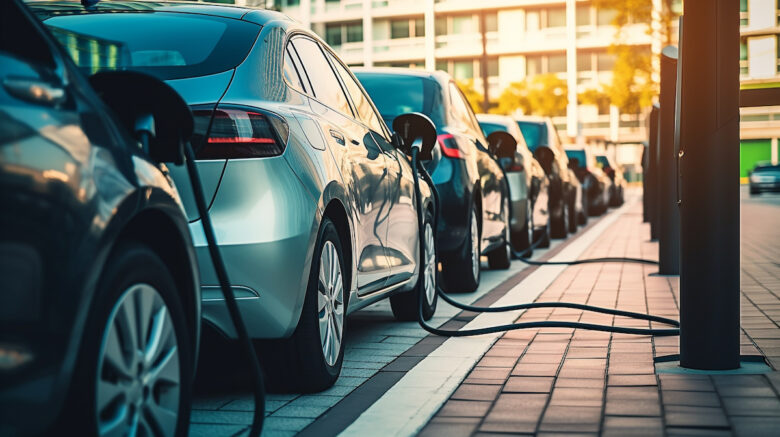Electric vehicles (EVs) have been rising in popularity globally, and Canada is no exception. With more EV models becoming available and government incentives making them more affordable, adoption rates have been climbing steadily in recent years. However, Canada still lags behind many other developed nations in EV sales and infrastructure. This article will provide an in-depth look at where Canada currently stands with electric vehicle adoption compared to the rest of the world.
EV Sales in Canada
EV sales in Canada have grown rapidly over the last decade. In 2011, only around 300 EVs were sold nationwide. By 2021, this number had risen to over 150,000 EVs sold, representing a 500-fold increase in just 10 years. Total Canadian EV sales increased by 30% from 2020 to 2021 alone.
However, EVs still only accounted for around 5% of total new car sales in 2021. This is quite low compared to global EV leader Norway, where EVs made up around 65% of new car sales the same year. The U.S. and China also both outpace Canada, with EVs accounting for around 5-10% of new car sales in recent years. Clearly, there is still ample room for growth for Canadian EV adoption rates.
At the provincial level, British Columbia leads the way in EV sales, accounting for over 40% of national sales in 2021. Quebec followed closely behind with about 30% of sales. Ontario, despite being Canada’s most populous province, lagged in third place with only 15% of EV sales nationally. Alberta and the Atlantic provinces have the furthest to go, with EVs still making up only 2-3% of provincial car sales.
The Tesla Model 3 was by far the best-selling EV in Canada in 2021, followed by the Ford Mustang Mach-E, Nissan Leaf, and Chevy Bolt. As more automakers release competitive EV models, it is likely we will see more diversity in the top selling EV lists in coming years.
Charging Infrastructure
One major factor influencing EV adoption rates is the availability of charging infrastructure. As of late 2021, Canada had over 13,000 public charging stations installed nationwide. However, the distribution of these stations remains uneven, with the vast majority concentrated in metropolitan areas of southern Ontario and Quebec.
B.C. boasts the highest ratio of EVs to charging stations, while the prairie provinces lag far behind. Rural regions and northern communities also suffer from a lack of charging options, creating “charging deserts”. Improving station coverage across all regions is critical for boosting EV accessibility and range confidence.
The major charging networks in Canada include Flo, Petro-Canada, Sun Country Highway, ChargePoint and Tesla Superchargers. Workplace and multi-unit residential buildings have also begun installing stations for tenants in larger cities. But continued infrastructure development will be needed to reach the government’s goal of having 1 public station per 50 km of highway.
Government Incentives
The federal government currently offers purchase incentives of up to $5,000 for qualifying EVs through its iZEV program. Additionally, a federal tax credit can save EV owners up to $2,500. Provincial governments also provide incentives in the form of purchase rebates and tax rebates of up to $8,000 in some regions. Free public charging, HOV lane access, exemption from hotel parking fees and ferry fares are other non-financial incentives some areas offer.
In total, Canadian EV buyers can save between $10,000 to $15,000 compared to U.S. buyers, making EVs more affordable. However, provinces vary significantly in incentive amount and type, creating an uneven landscape. Quebec, B.C., Nova Scotia and P.E.I. tend to offer the most generous provincial incentives, while other provinces lag behind. Strong, consistent incentives across all regions could help drive adoption.
Adoption Rates by Province
As previously mentioned, British Columbia currently leads all provinces for EV adoption, with over 50,000 EVs on the road and a 9% market share of new car sales. The provincial government has heavily promoted EVs through substantial purchase incentives, public charging expansion and HOV lane access. B.C.’s abundant hydroelectric power also makes it easy to charge EVs with clean energy.
Quebec follows closely behind, with EVs accounting for 7% of new car sales. Quebec offers up to $13,000 in total purchase and tax incentives and has over 2,500 public charging stations installed. Smart province-wide electrification policies and a cool climate well-suited to EVs have driven early adoption.
Ontario comes third but is growing faster than any other province. EV market share jumped from 3% to 6% in Ontario between 2019-2021 thanks to rising model availability and provincially funded incentive programs. Charging stations have doubled, but are still mostly limited to Southern Ontario.
The prairie provinces of Manitoba, Saskatchewan, and Alberta have the lowest adoption, all under 2% market share. Lack of incentives and long driving distances that strain EV range has slowed growth. Atlantic Canada also lags, but recently launched generous incentive programs that could accelerate EV sales.
Future Outlook
Based on current trends, Canada’s EV market share is forecasted to reach 15-20% by 2025 and over 30% by 2030. However, realizing these ambitious targets will require addressing persistent barriers to widespread adoption. Continued government support, more charging infrastructure, greater model availability, and increased consumer awareness will be key in the coming years.
Automakers are slated to release dozens of new EV models in Canada over the next 5 years, including more affordable options. Combined with rising gas prices and planned regulations on emissions, this should boost sales. However establishing reliable charging on highways and in remote regions remains a challenge.
With strong policies, incentives, and infrastructure investment in place, Canada has the potential to become a global leader in EV adoption. But more work remains to be done across every province to make EVs accessible to all Canadians and realize a truly coast-to-coast transition to electric mobility.
Conclusion
In summary, Canada has made decent progress on electric vehicle adoption over the past decade, with sales rising yearly and EVs reaching 5% market share in 2021. However, Canada still lags behind global EV leaders and varies greatly between provinces in terms of incentives, charging availability and adoption rates. Boosting consumer awareness, expanding infrastructure, and increasing model diversity will be key to accelerating EV sales across all regions and driving Canada toward a more electric automotive future. With thoughtful planning and support, Canada could leapfrog into a leading position in the global transition to sustainable electric transportation.



